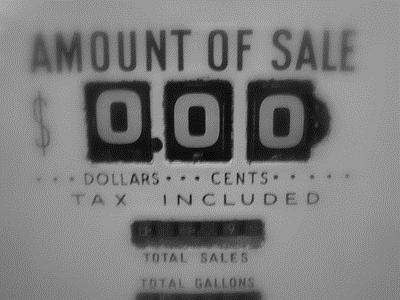
Sold under both the Geo and Chevrolet brands, the Tracker was first introduced in 1989. Eventually, the Tracker was sold as a Chevy, and later, as the Suzuki Vitara. Throughout the years, each Tracker came equipped with a four-cylinder, 1.6-liter engine. Given the smaller engine and compact size of its frame, the Tracker managed to achieve respectable gas mileage, usually posting numbers in the mid-to-high 20s for highway driving conditions.
The way you drive your Tracker has a major influence on its gas mileage. First, you should watch your speed. If you tend to push the Tracker to speeds greater than 60 miles per hour, you could be reducing your mileage by as much as 7 to 23 percent, according to data provided by the U.S. Department of Energy. By driving slower, you reduce the workload on the 1.6-liter engine. Also, for improved fuel economy, you must avoid aggressive and/or stop-and-go driving. Constantly braking and accelerating causes the engine to work harder, leading to more gas being burned. Give yourself space in traffic, coast to stops and accelerate slowly.
The older your Tracker gets, the more important it is to ensure that it's properly maintained. If the engine and all of its components are in good working condition, the Tracker operates more efficiently and produces better gas mileage. For example, a quality oil keeps the internal parts of the engine lubricated, thus reducing friction and making it easier for the motor to run as it should. Therefore, you should change the oil every 3,000 to 5,000 miles. When the oil is changed, check the Tracker's air filter and replace it if needed. It's also important to check the Tracker's spark plugs, oxygen sensors, fuel lines, fuel injectors, fuel pump and gas tank for any problems. All of these components, if not working properly, could lead to poor gas mileage. Finally, check the air pressure in the Tracker's tires. Tires that aren't fully inflated may cut your fuel economy by 3 percent, according to the Federal Trade Commission.
There are a number of other simple ways to increase your Tracker's gas mileage. One of the easiest things you can do is turn the Tracker's engine off when the vehicle is motionless. Whether you're waiting for someone in a parking lot or caught in a traffic jam, turn the Tracker's ignition switch off rather than letting it idle. Also turn off the Tracker's air conditioning when it's not absolutely necessary to have it on; save both gas and money by rolling down the windows. Unnecessary weight is another cause of poor gas mileage. If you're hauling unnecessary cargo in your Tracker, remove it as soon as possible. This could be anything from sporting equipment to luggage or tools. The extra weight means the smaller engine in your Tracker must use more gas to provide the necessary power.